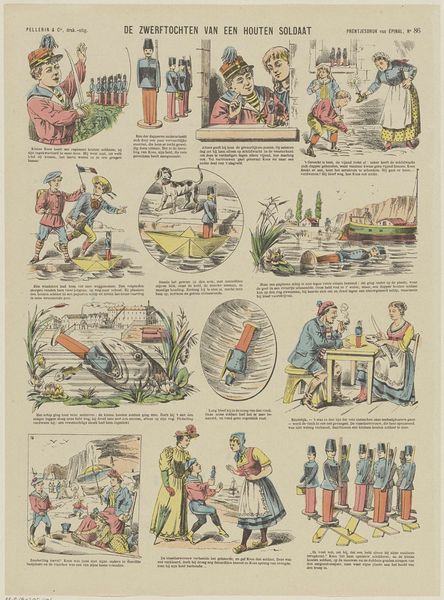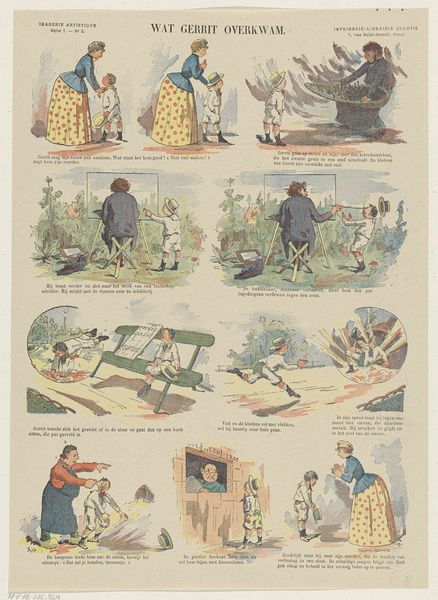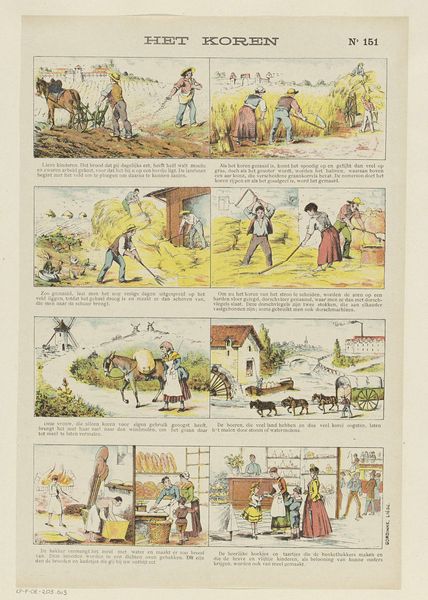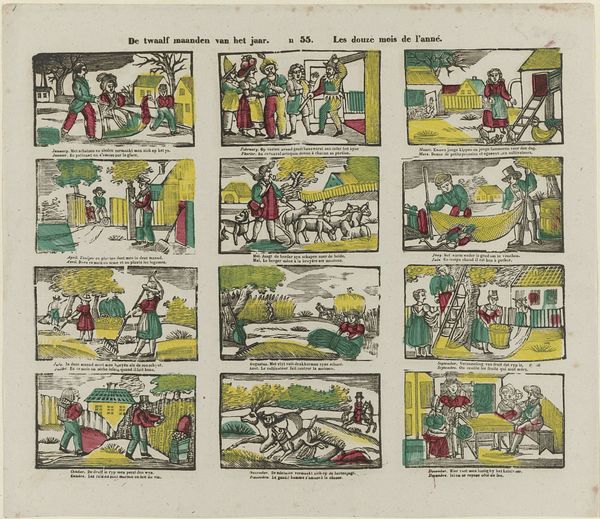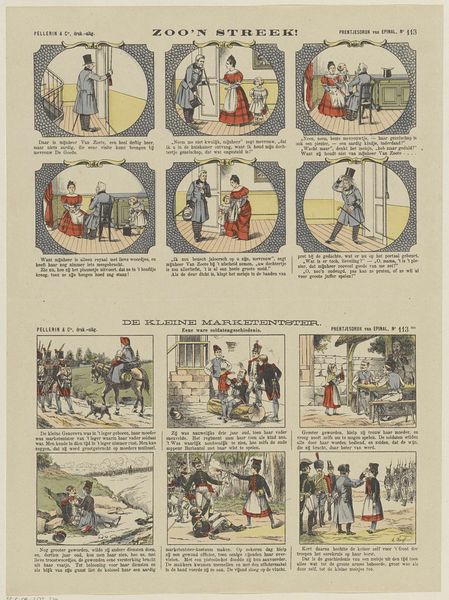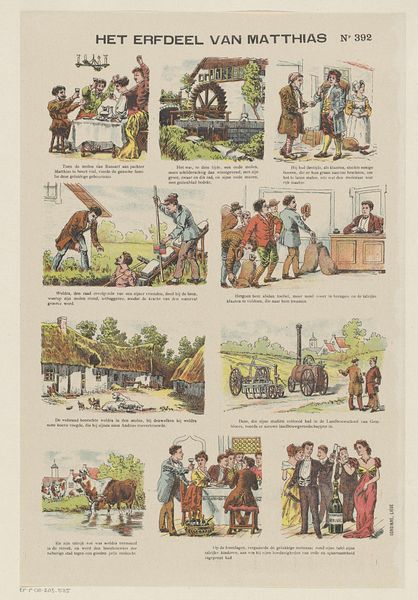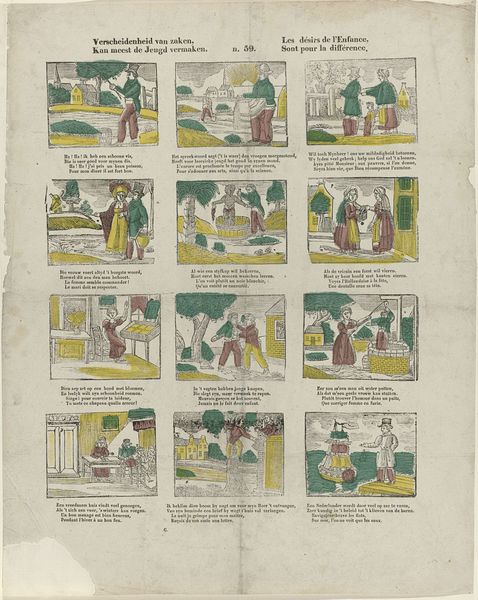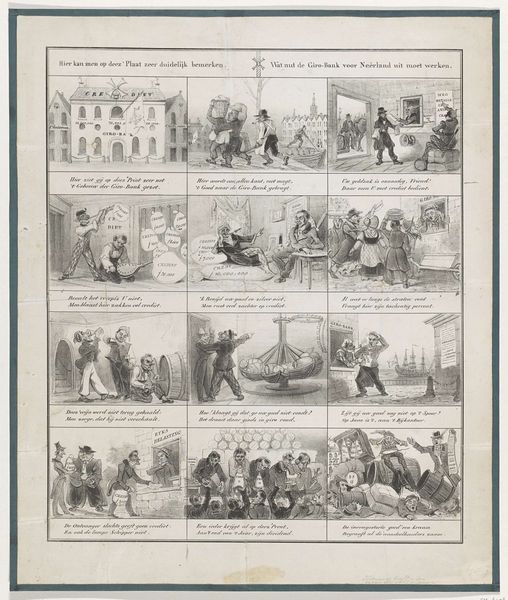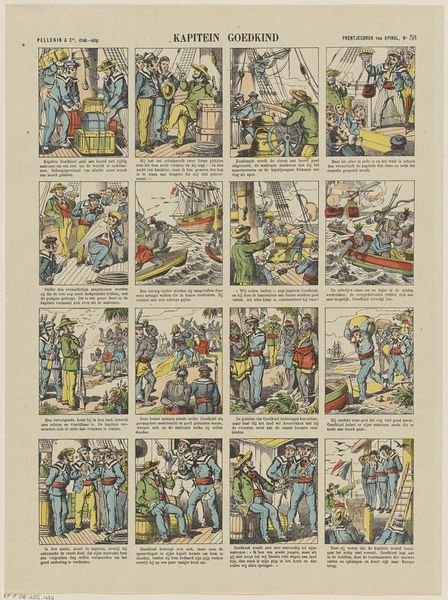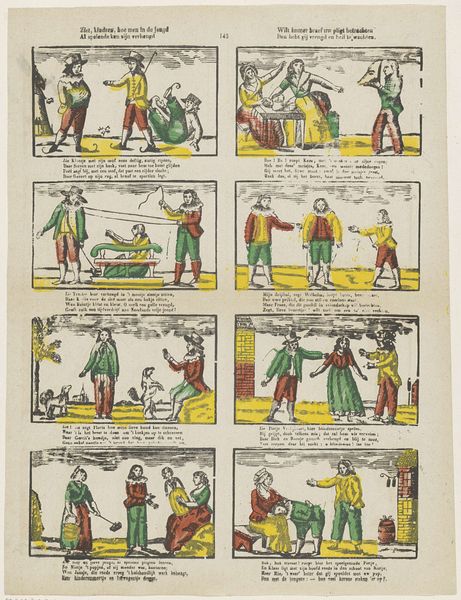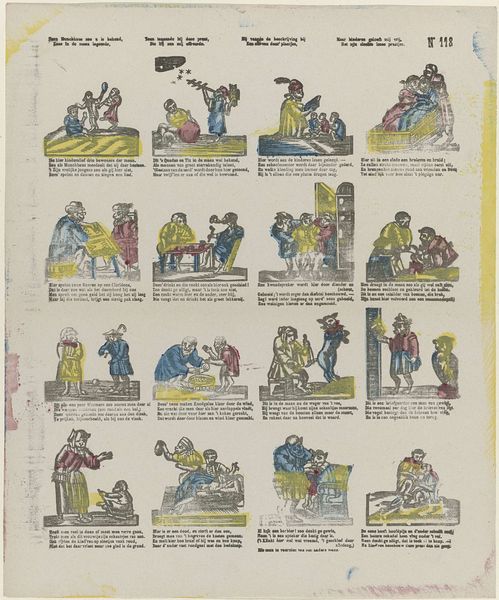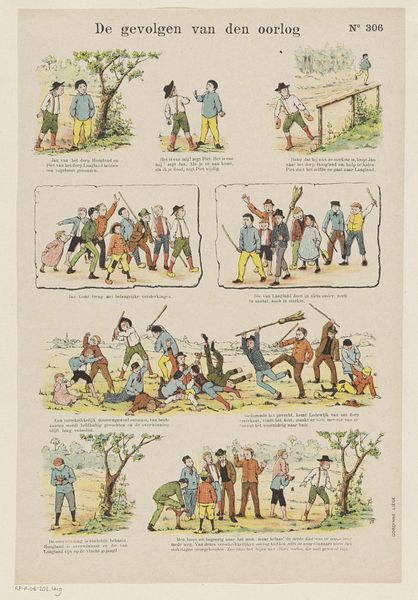
graphic-art, print
#
graphic-art
#
narrative-art
# print
#
genre-painting
Dimensions: height 399 mm, width 270 mm
Copyright: Rijks Museum: Open Domain
Curator: Here we have "De Tabak," dating from somewhere between 1894 and 1959 by A. de Ker, a piece residing here at the Rijksmuseum. It is a delightful narrative print depicting the journey of tobacco production. What’s your initial read? Editor: It strikes me as a series of carefully constructed vignettes. The scale and repetition give a feeling of relentless labor, a very industrial feel to something rooted in the soil. I sense a critical eye, not a romantic portrayal. Curator: Precisely. Each small panel, each meticulously rendered scene, builds upon the previous one. It traces tobacco's transformation, beginning with the cultivation of the plant and then moving on to processing and sales. Visually, it’s an enactment of an industrial narrative of efficiency and commerce. Editor: Right. And the composition is deliberate; it visualizes an oppressive system of resource extraction, and, I’d argue, global trade, because it makes tangible the relationship of consumer habits with global capitalism, colonialism, and early capitalist labor practices. Curator: The depiction of labor here, and the consumer spaces that appear, really evoke the cultural significance associated with tobacco use. We have a narrative being constructed through these sequential images, reinforcing specific ideas and traditions around leisure and societal status associated with it. Editor: That cultural weight definitely impacts my view, as well. What I'm drawn to, though, are the implicit critiques it levitates: labor exploitation, market economies, commodity and addiction, not necessarily what it sets out to portray at face value. It raises important questions around access to power, resources and land. Curator: But the choice of genre itself has weight. Consider how prints as a medium disseminated information widely in the past, reinforcing ideas about consumerism, globalization, or social status around the globe, much in the way it still happens today. Editor: Absolutely. Looking at this piece through that lens, considering the intersections of history, power and consumer culture, gives it resonance today. It helps me, anyway, recognize how deeply rooted are current social practices. Curator: For me, it enriches the piece by showcasing how objects act as carriers of meaning, reinforcing cultural memory. By examining its construction, we open a passage to reconsider our own behaviors. Editor: Agreed. "De Tabak" leaves me pondering the complex, interconnected nature of our consumer choices. I hope it has the same impact on our audience today.
Comments
No comments
Be the first to comment and join the conversation on the ultimate creative platform.
